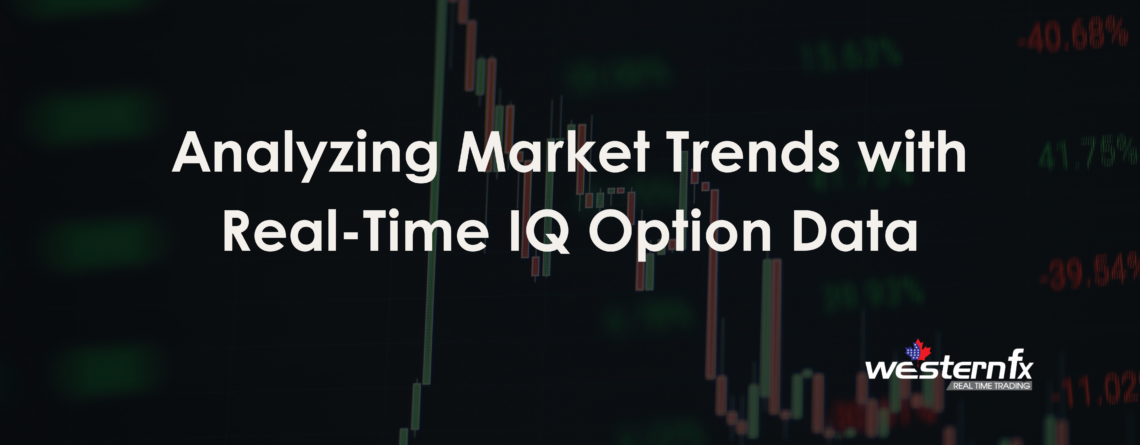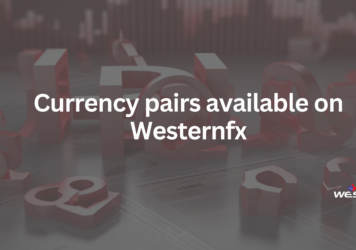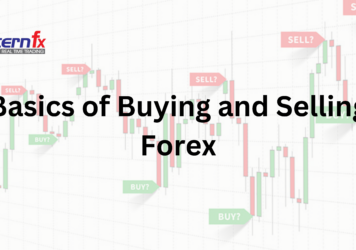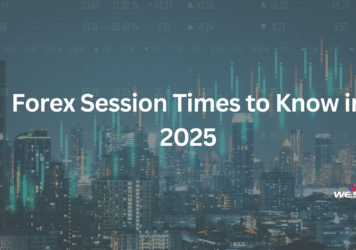Analyzing Market Trends with Real-Time IQ Option Data
Understanding market trends is crucial for any trader aiming to make informed decisions. Leveraging the IQ Option platform offers traders a significant edge by providing real-time data that is essential for analyzing these trends effectively. Using real-time data from the IQ Option platform can help traders spot trends earlier and make decisions based on up-to-the-minute information.
The platform is designed with tools that allow for detailed technical analysis, including indicators like moving averages, Bollinger Bands, and Fibonacci retracement lines. These tools assist traders in identifying patterns, confirming trends, and planning their strategies confidently. Access to a combination of technical charts, an economic calendar, and real-time analysis becomes indispensable when aiming for accurate market predictions.
By integrating all elements of market data, the IQ Option platform offers a comprehensive environment for traders. This capability not only aids in capturing potential trend reversals but also strengthens decision-making with timely insights and graphical analysis tools.
Understanding Market Trends
Market trends are crucial in guiding investment decisions and strategic planning. Real-time data is essential to accurately assess trends, helping businesses and investors anticipate and react to market shifts.
Defining Market Trends
Market trends refer to the consistent direction of market price movements over time. They can be influenced by various factors such as consumer behavior, economic policies, and technological advancements. Trends can be classified into three types: upward trends, downward trends, and sideways trends.
Price movements, volume, and volatility are key indicators of trends. Analysts often look for patterns to determine the strength and duration of these trends. Identifying these early can provide significant advantages in decision-making processes. Understanding these elements helps distinguish short-term noise from genuine, long-term movements.
The Importance of IQ Option Real-Time Data
Real-time data is vital for effectively analyzing market trends. It offers continuous monitoring of price movements, volume changes, and volatility. Platforms like IQ Option enable access to this data, supporting swift decision-making. Immediate data access allows investors to respond promptly to shifts.
Utilizing real-time insights improves accuracy in identifying patterns and trends, leading to more informed strategic moves. By leveraging tools that provide instant data, businesses can enhance their market responsiveness, minimizing risks and maximizing opportunities. This capability is particularly crucial during periods of high market volatility, where quick adjustments can significantly impact outcomes.
The Basics of Technical Analysis
Technical analysis involves studying historical price movement and volume data to forecast future price trends. It employs various technical indicators and pattern recognition techniques to analyze financial markets.
Key Technical Indicators
Technical indicators are essential tools used in market analysis. They help traders identify potential entry and exit points in the market by assessing price changes and market trends. Common indicators include moving averages, which smooth out price data to highlight trends. Relative Strength Index (RSI) measures the magnitude of recent price changes to evaluate overbought or oversold conditions.
Another important indicator is the Moving Average Convergence Divergence (MACD). It indicates the relationship between two moving averages of a security’s price. Bollinger Bands consist of a middle moving average line and two bands, which reflect volatility and potential price changes. These indicators, among others, assist traders in making informed decisions.
Pattern Recognition Techniques
Recognizing patterns in price charts is a fundamental aspect of technical analysis. Patterns are formations created by the price movements of a security, which can suggest future price movements. Some commonly recognized chart patterns include head and shoulders, double tops, and triangles. Each pattern type has its significance, with head and shoulders often indicating a reversal and triangles suggesting continuation or breakout points.
Candlestick patterns, such as the hammer or engulfing pattern, provide insights into market sentiment and potential reversals. These patterns are widely used due to their visual clarity and predictive potential. Accurate pattern recognition assists traders in identifying trends and making strategic trading moves.
Integrating IQ Option Tools
Integrating the tools available on the IQ Option Platform can greatly enhance trading strategies and decision-making processes. By using indicators and leveraging the platform’s user-friendly interface, traders can gain valuable insights and improve their efficiency.
Leveraging the IQ Option Platform
The IQ Option Platform offers a robust trading environment with multiple features. Its user-friendly interface ensures that traders, regardless of their experience level, can navigate easily. The platform includes a mobile app, allowing users to trade on the go, making it convenient for those who need to monitor trades in real-time.
The availability of customizable charts, displaying various timeframes, aids in comprehensively understanding market dynamics. Through technical analysis tools, traders can stick markers and symbols on charts, facilitating easy pattern identification. These features allow for quick adjustments to trading strategies based on market fluctuations, providing a comprehensive trading experience.
Utilizing Indicators and Tools on IQ Option
IQ Option offers a variety of popular indicators like Moving Averages, Bollinger Bands, and Relative Strength Index (RSI), essential for traders targeting precision in their transactions. These indicators are seamlessly integrated into the platform, allowing real-time analysis without any need for external software.
The Sentiment Analysis tool provides insight into market mood, reflecting buyer and seller activities. By combining sentiment analysis with technical indicators, users can form a holistic view of market conditions. The platform encourages a strategic approach by offering a suite of tools that can be customized to individual trading preferences. This detailed integration empowers traders to make informed, timely decisions.
Analyzing IQ Option Trading Volume and Sentiment
Understanding the nuances of trading volume and sentiment can provide traders with meaningful signals about market trends and potential opportunities. By effectively evaluating these elements, traders can enhance their decision-making process and optimize trading strategies.
Volume as an Indicator of Trend Strength
Trading volume is a critical component for evaluating trend strength in the financial markets. A surge in volume often accompanies robust market moves, as it reflects strong investor interest and participation. This heightened activity can signify the potential continuation of the current trend, whether bullish or bearish.
Low trading volume might indicate a lack of conviction, suggesting that significant price movements may not be sustainable. Technical analysts frequently monitor volume patterns alongside price action, as this can offer deeper insights into the market’s momentum and potential reversals. Traders should also watch for sudden spikes in volume that could signal imminent breakout or breakdown scenarios.
Sentiment Analysis for Options Trading
Sentiment analysis provides insight into trader psychology by evaluating emotions and opinions expressed in news, social media, and trading behavior. It is particularly valuable in options trading, where sentiment can greatly impact price volatility.
Tools like the option flow sentiment indicator analyze the volume and type of options being traded, helping traders discern market sentiment as either bullish or bearish. Open interest, an important metric in this context, identifies the number of open contracts and can be used to measure market activity and potential direction shifts.
Assessing sentiment can lead to more informed trading decisions, allowing traders to capitalize on market dynamics as they quickly evolve. Implementing sentiment analysis alongside traditional market indicators can enhance a trader’s ability to predict significant market movements.
Options Trading Strategies
Options trading can be complex, but effective strategies and proper risk management can aid in making informed investment decisions. This section covers some basic and important strategies for options trading.
Fundamental Options Trading Methods
One of the key strategies in options trading involves bullish and bearish tactics. Bullish strategies might include buying call options, which provide the right to purchase an asset at a specified price before a certain date. This method is useful when anticipating an upward market trend.
In contrast, bearish strategies can involve buying put options. This method allows selling an asset at a predetermined price and time, often used when prices are expected to drop. Investors may also use covered calls, pairing an owned asset with a sold call option for additional income in flat markets.
Another common method is straddles and strangles, where both call and put options are used on the same asset to capitalize on significant price movements, regardless of direction. These strategies provide flexibility in dynamic markets.
Risk Management in Options Trading
Risk management is essential in options trading to protect investments. Position sizing is crucial, as it determines the amount of capital allocated to each trade, considering the overall portfolio. It’s important to use a fixed percentage of the total portfolio value to manage risk exposure.
Implementing stop-loss orders in options trading can help minimize potential losses by automatically executing trades when the asset price hits a predetermined level.
Diversification is another vital aspect of risk management, involving the inclusion of various assets and strategies to reduce the impact of any single market movement. Moreover, regular portfolio reviews and adjustments based on market conditions help maintain an optimal risk profile.
Advanced Analytical Methods
The use of advanced analytical methods allows for precise market trend analysis and prediction, crucial for trading success on platforms like IQ Option. The integration of machine learning algorithms and artificial intelligence enhances forecasting capabilities and boosts accuracy in predictions.
Applying Machine Learning Algorithms
Machine learning algorithms are a cornerstone of modern data analysis. They can process enormous datasets to recognize patterns and trends that may not be visible to the human eye. By employing models such as decision trees, random forests, and neural networks, traders can generate insights into potential market movements.
These algorithms learn from historical data—adapting as they receive new information—to refine predictive accuracy. In the context of financial markets, they assist in understanding complex behaviors and volatile conditions. IQ Option utilizes these algorithms to provide traders with tools for making informed decisions, ultimately leading to more effective trading outcomes. This technology is instrumental in transforming raw data into actionable insights, thereby empowering traders with valuable foresight.
Artificial Intelligence in Market Prediction
Artificial intelligence significantly enhances market prediction efforts by introducing automation and learning capability to the analytical process. Through techniques like natural language processing, AI systems can interpret vast arrays of unstructured data such as news articles, tweets, and financial reports that might influence market dynamics.
Deep learning—a subset of AI—enables models to understand and predict complex non-linear relationships in financial data. When combined with real-time data analysis, these AI-driven methods significantly improve the precision and timeliness of market predictions. This constantly evolving technology helps traders navigate the intricacies of financial markets on platforms like IQ Option, providing a competitive edge by alerting them to trends faster and with greater accuracy.
Technological Impact on Trading
Modern trading has been significantly influenced by technological advancements. Automated trading systems now dominate the landscape, with both algorithmic trading and high-frequency trading (HFT) playing crucial roles in enhancing market efficiency and scalability. These systems rely on real-time data for quick decision-making and execution.
Algorithmic Trading Systems
Algorithmic trading enables traders to set predefined rules for executing trades, automating the process and removing emotional decision-making. These systems can process vast amounts of data rapidly, making real-time analysis crucial for success. By using complex algorithms, traders can identify patterns and predict market movements, resulting in more efficient transactions.
The rise of algorithmic trading has also increased market liquidity, as trades can be executed quickly without significant human intervention. Scalability becomes a key advantage, allowing these systems to handle large volumes of trades without performance degradation. This form of trading is particularly beneficial for institutional investors who require consistent execution across substantial portfolios.
High-Frequency Trading (HFT) and the Market
High-frequency trading (HFT) involves executing a large number of trades in fractions of a second, capitalizing on small price discrepancies. HFT systems are highly reliant on cutting-edge technology, with a focus on minimizing latency and maximizing speed. By utilizing complex algorithms, HFT firms can take advantage of momentary market inefficiencies, leading to increased market competition.
Although HFT has contributed to improved market efficiency and liquidity, it also poses challenges. The sheer speed of transactions can lead to volatility, affecting price stability. Nevertheless, HFT continues to shape the trading landscape, with firms constantly seeking technological advancements to enhance scalability and maintain competitive edges in the market.
Data Analysis for Market Insight
Data analysis plays a crucial role in understanding market dynamics. By collecting and examining market data, businesses can make decisions that align with trends and consumer behavior patterns. Utilizing both historical and real-time data enhances forecasting accuracy and strategic planning.
Gathering and Interpreting Market Data
Gathering comprehensive market data is essential for analysis. This involves acquiring both historical data and real-time market data. Historical data provides context and reveals long-term patterns, while real-time data offers insights into the current market situation.
Utilizing advanced data analysis tools, businesses can effectively interpret this data to identify trends and opportunities. Tools that facilitate predictive and real-time analysis are particularly valuable as they enable quick adaptation to market changes. Analyzing real-time data on platforms like IQ Option can significantly improve decision-making and operational efficiency, giving companies a competitive edge in their market strategies.
Developing a Trading Edge
Developing a trading edge involves leveraging effective backtesting strategies and tailoring trading approaches to individual styles and preferences. It requires understanding the statistical and operational aspects of the markets to enhance decision-making.
Backtesting Strategies for Reliability
Backtesting is essential for establishing the reliability of trading strategies. Traders simulate their strategies using historical data to assess performance over time. This allows them to understand how their strategies would have fared in different market conditions.
Effective backtesting involves meticulous attention to data quality and the correct application of tests to avoid bias. Traders often use software platforms with robust backtesting capabilities to replicate real trading scenarios. Highlighting performance metrics, such as profitability ratios and drawdown levels, can guide tweaks and refinements.
It’s crucial for traders to set clear benchmarks, considering factors like risk tolerance and desired return. The insights gained from backtesting enable a trader to adjust their strategies before applying them to live markets.
Customizing Approaches to Trading Style
Customizing trading approaches involves aligning strategies with personal trading styles and preferences. Each trader operates differently, and what works for one may not suit another. By tailoring approaches, traders can more effectively manage risk and capitalize on market opportunities.
Traders may focus on different markets or instruments, such as stocks, forex, or commodities, based on their analysis strengths. Customization may also involve adapting time frames—choosing between day trading or longer-term investing strategies.
Tools like TraderEdge offer customizable indicators and analytics, helping traders refine their methods. This allows them to remain consistent with their natural trading style while maximizing edge efficiency in their chosen markets.
The Role of Institutional Investors
Institutional investors play a crucial role in financial markets by influencing market movements and identifying trading opportunities. They manage significant capital, making their decisions impactful to market stability and potential trades.
Impact on Market Movements and Opportunities
Institutional investors, such as pension funds and insurance companies, have substantial buying power. Their large-scale trades can significantly sway market movements. When these entities decide to buy or sell, they can cause considerable shifts in stock prices, affecting overall market trends.
These investors often have access to high-quality, well-managed data for ongoing analysis, allowing them to spot trading opportunities that individual investors might overlook.
Their strategies frequently involve long-term investments based on thorough market analysis. This approach helps in stabilizing markets by providing liquidity and reducing volatility. In doing so, institutional investors create a range of trading opportunities for other market participants, including potential arbitrage moments and investment trends that can be capitalized upon.
They also play a key role in the dissemination of crucial financial information, enhancing transparency and market efficiency. By maintaining diverse portfolios across multiple sectors, these investors can balance risk and optimize returns, contributing to a dynamic trading environment.
Institutional investors’ ability to adapt to real-time data feeds makes them adept at navigating complex market conditions. This continuous data analysis strengthens their decision-making processes, allowing them to assess both macroeconomic indicators and specific market events for potential trades.
Practical Approach for Traders
When utilizing the IQ Option platform to analyze market trends, traders can benefit significantly by customizing the platform’s features to match their personal trading styles and experience levels. Experienced traders will find specific strategies valuable for navigating complex market dynamics effectively.
Tailoring IQ Option’s Features to Your Needs
IQ Option offers a variety of customizable features that allow traders to align the platform with their specific trading strategies. Users can adjust technical indicators, such as moving averages and Bollinger bands, which are integral to analyzing price movement and volatility.
The platform’s user interface can be adapted by changing chart types or timeframes, providing a personalized experience. Custom alerts can be set for specific market events, helping traders stay informed about key movements. This adaptability makes it essential for traders to fully explore the platform settings to optimize their trading sessions.
Using the demo account feature, traders can practice different strategies without financial risk. This allows them to understand their trading style better and make informed decisions when engaging with real funds.
Navigating Market Trends as a Seasoned Trader
Seasoned traders often rely on detailed market analysis to make informed trading decisions. They use advanced charting tools provided by the platform to identify patterns and predict possible market outcomes. They leverage real-time data to forecast trends and adjust their strategies accordingly.
Highly experienced traders benefit from insights gained through in-depth market analysis using sophisticated indicators like RSI or MACD, which are available on IQ Option. These tools aid in making timely decisions based on trend momentum and potential reversal points.
By closely monitoring economic calendars and news feeds integrated into the platform, traders can remain aware of market conditions that may influence asset prices. Combining this with their knowledge and experience, they can navigate volatile trading environments with confidence.
Frequently Asked Questions
The IQ Option platform is a favored choice for real-time market analysis due to its robust tools and secure environment. This section addresses common inquiries about indicators, security, and platform comparisons.
What are the most reliable indicators to use on the IQ Option platform for analyzing market trends?
The IQ Option platform offers a range of indicators such as Moving Averages, Relative Strength Index (RSI), and Bollinger Bands. These tools are effective for identifying market patterns and making informed trading decisions.
How does the IQ Option platform ensure user security and data protection?
IQ Option employs industry-standard encryption and multi-factor authentication to safeguard user data. The platform adheres to strict regulatory standards and ensures that personal and financial information is protected.
What are the alternatives to IQ Option for real-time market trend analysis?
Alternatives to IQ Option include platforms like and MetaTrader 4. These platforms also provide real-time data and a variety of analytical tools for traders.
How does IQ Option compare with TradingView regarding real-time data analysis capabilities?
IQ Option offers robust analytical tools similar to those found on TradingView. While both platforms provide real-time data, TradingView is renowned for its comprehensive charting capabilities and strong community features.
What are the best practices for technical analysis in option trading?
Successful option trading requires efficient use of technical analysis. Investors should focus on trend identification, risk management, and incorporating various indicators. Consistent evaluation and adapting to market changes are vital practices for maintaining a competitive edge.











